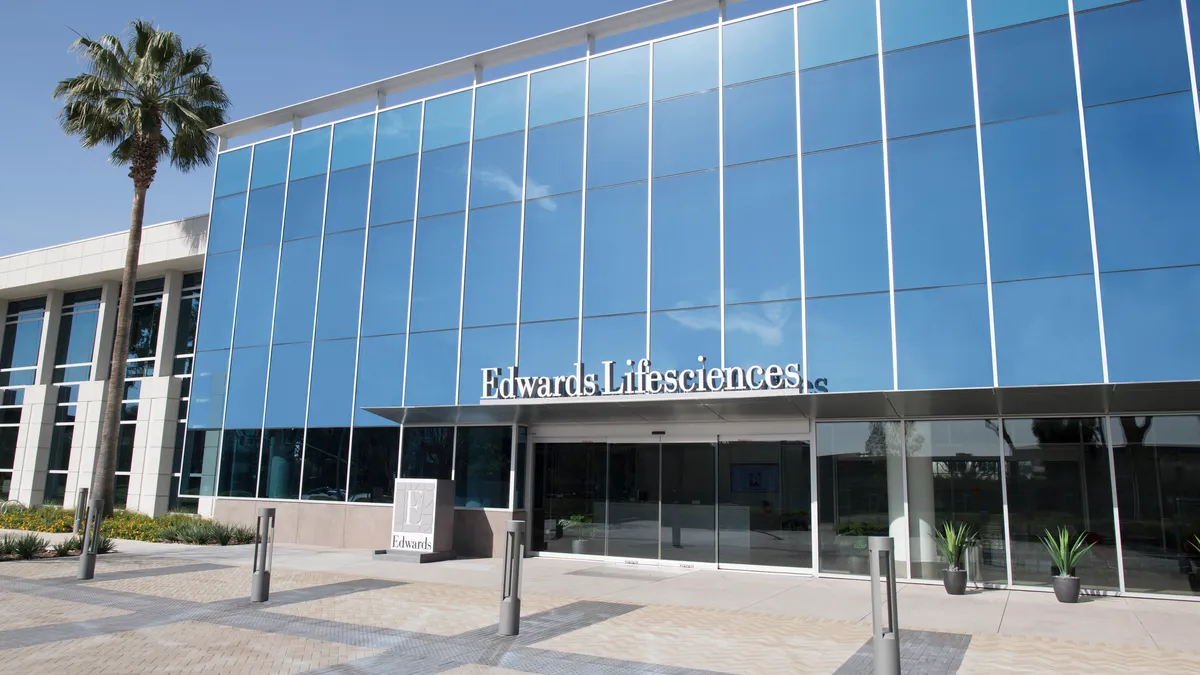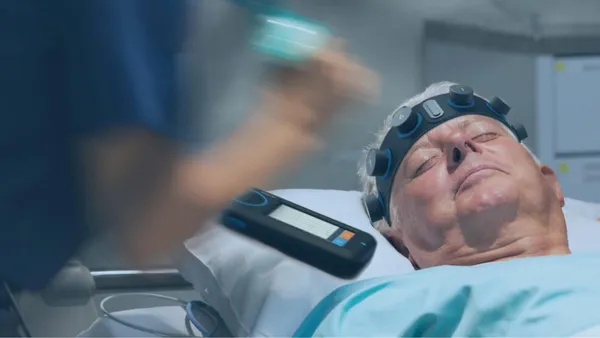Dive Brief:
-
Edwards Lifesciences' sales of transcatheter aortic valve replacement devices rose 6% in the third quarter, putting it on track to hit the forecast it made in July for 5% growth across the full year.
-
The medtech expects TAVR revenues to grow sequentially in the fourth quarter but, given that sales rose 9% between the third and fourth quarters of 2019, faces a tough year-on-year comparison. That contributed to Edwards forecasting slightly less impressive overall growth of 4% for the fourth quarter. Shares in Edwards fell roughly 5% on Thursday.
- The 4% growth forecast implies fourth quarter sales of approximately $1.22 billion. The consensus estimate of analysts polled by Zacks ahead was $1.26 billion.
Dive Insight:
Edwards has fared better than it expected through the pandemic. Demand returned faster than anticipated in the second quarter, emboldening the company to predict it would hit the top end of its -5% to +5% target range for TAVR sales in 2020. After reviewing its third quarter results, Edwards still expects to hit the top end of its target range.
Performance expectations have risen over time in part due to the second quarter results of Edwards and its peers and the third quarter financials shared by medtech companies such as Johnson & Johnson and Smith & Nephew.
In the third quarter, Edwards benefited from a backlog of TAVR work at European hospitals, with TAVR sales in the region growing in the high single digits. With the backlog now cleared, a tailwind that supported third quarter growth has dissipated.
In the U.S., TAVR sales grew in the mid-single digits. All active U.S. TAVR sites performed cases, up from 90% in the second quarter.
The resurgence of COVID-19 cases in Europe and parts of the U.S. creates uncertainty about Edwards’ prospects in the fourth quarter, as CEO Michael Mussallem acknowledged on a conference call with investors. For example, Belgium deferred elective procedures this week in response to the rising hospitalizations, but Edwards’ talks with hospitals suggest widespread global disruption to surgeries is unlikely.
“They really strongly believe that they now know how to do TAVR cases or to treat structural heart patients and COVID patients at the same time. When this first hit in Q2 that was a question mark,” Mussallem said.
The continuation of work has near and long-term benefits for Edwards. Mussallem said screening patients' heart health has resumed, which helps to restock the pipeline of new TAVR cases, although the pause earlier in the year means capacity is “somewhat of a constraint.” A repeat of the screening pauses seen earlier in the year would disrupt the pipeline and exacerbate the capacity constraints.
Some analysts aren't worried about what immediate challenges mean for the sector's story.
"Despite COVID-19-related risks to near-term execution, we believe it is a matter of when, not if, the TAVR market returns to double-digit-plus growth," analysts at William Blair wrote in a note to investors.
While such uncertainties complicate the task of making long-term predictions, Edwards expects TAVR sales to return to double-digit growth in 2021. Edwards also aspires to double sales of Pascal, its rival to Abbott’s MitraClip. Sales at the transcatheter mitral and tricuspid therapy unit are on course to hit $40 million this year, driven by the resumption of activity in Europe.
Edwards, which is pricing Pascal at a premium, is starting to chip away at Abbott’s stranglehold on the market. “I wouldn't say that we see people completely switch from one system to another. I think that we see them more or less split,” Mussallem said.
Pivotal trials designed to unlock more markets were set back by a quarter or two due to COVID-19 but are now enrolling subjects at pre-pandemic rates.
In TAVR, Edwards faces a challenge from Medtronic, which recently outlined plans to run a clinical trial pitting its TAVR system against Edwards’ Sapien devices. Mussallem downplayed the threat posed by the clinical trial, telling analysts “we believe that clinicians make decisions based on the total patient outcomes and not one singular element.”









